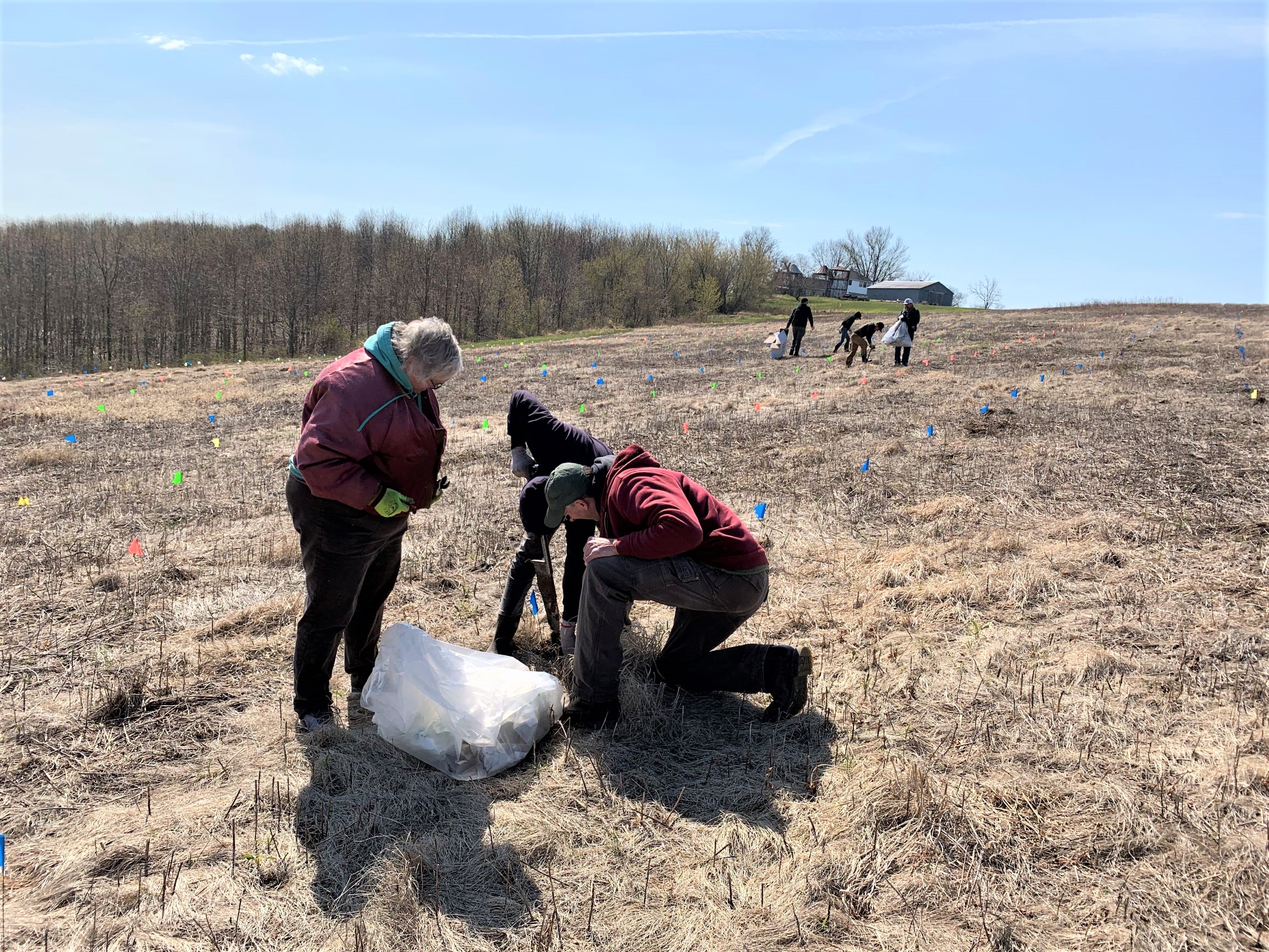Near Boscobel, the Wilson State Forest Nursery was a beehive of activity through the month of April. Walking row after row of small trees, behind a harvesting machine, crew members carefully lifted seedlings from soil so as to not damage roots. Overseeing the operation is Wisconsin Department of Natural Resources (DNR) Reforestation Team Leader Joe Vande Hey.
“We’re looking at about three-and-a-half million trees this year,” he says proudly. “We sold just about everything we have, and I’m anticipating sales to increase probably to the five-million range over the next couple of years.”
Wisconsin’s Reforestation Program grows high-quality, reasonably priced, native-tree seedlings and shrubs to plant on private and public lands for conservation. It has a rich history dating back to 1911 when the state’s first tree nursery was planted. Over the decades, 1.6 billion seedlings have been supplied to landowners.
Vande Hey says Wisconsin’s pledge to plant 75 million trees by 2030 is part of the reason he has a positive outlook for growth over the next couple of years. “It’s definitely putting an emphasis back on tree planting. It sparks interest and that’s going to mean an increase in sales.”
Providing future forest products, improving wildlife habitat, preventing soil erosion are all motivating the effort, but now more so than ever, there’s a focus on removing carbon dioxide from the atmosphere, as outlined in Wisconsin’s Statewide Forest Action Plan.
As it turns out, carbon sequestration and carbon storage are two things our forests do very well. Protecting the planet by fighting climate change is a cause that continues to grow in popularity.
Vande Hey explained, “Trees tie up carbon, so the more forested land we have, the more carbon we can capture. Private landowners definitely see the benefit and want to be recognized for helping plant trees.”
He says 60 to 70% of stock grown in state nurseries is being shipped to private forest landowners, such as the FitzRandolph family featured in this video.
The nursery sells 30 to 40 different species, a mix of hardwoods, conifers, and shrubs: generally red, white and jack pines, white spruce, oaks and maples.
Emerald ash borer is causing “a pretty good shift” for orders to some areas, Vande Hey said, with alternative species like white oak, red maple, tamarack and cedar going to areas where ash trees once flourished. More species changes are on the horizon, not because of emerald ash borer, but due to global warming.
“We’re starting to play with species typically found only in southern Wisconsin, trees we historically didn’t grow a lot of that might be planted in other areas of the state, or even species that historically don’t come into Wisconsin,” Vande Hey said. “Trees native to Illinois, Iowa and Indiana, where it’s a bit warmer.”
Whatever the species, the seedlings will be planted to regenerate acreage where trees have been harvested or going into the ground where forests have been absent.
“Some forest landowners are planting through the Conservation Reserve Program – taking crop ground that is highly erodible and putting it into more permanent cover. There are a good number of seedlings being planted under hardwoods, particularly in southern Wisconsin where they’re not getting the natural oak regeneration that they desire.”
Wherever seedlings are headed, he says Wisconsin’s reforestation program has the capacity to meet increased demands, now motivated to a large extent by climate change.


